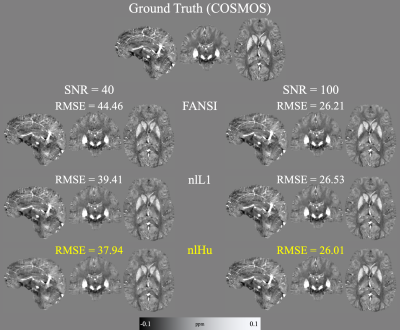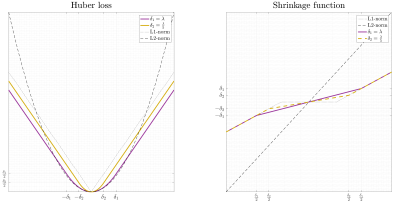Mathias Gabriel Lambert1,2,3, Carlos Milovic4, and Cristian Tejos1,2,3
1Department of Electrical Engineering, Pontificia Universidad Católica de Chile, Santiago, Chile, 2Biomedical Imaging Center, Pontificia Universidad Católica de Chile, Santiago, Chile, 3Millennium Nucleus for Cardiovascular Magnetic Resonance, Santiago, Chile, 4Department of Medical Physics and Biomedical Engineering, University College London, London, United Kingdom
1Department of Electrical Engineering, Pontificia Universidad Católica de Chile, Santiago, Chile, 2Biomedical Imaging Center, Pontificia Universidad Católica de Chile, Santiago, Chile, 3Millennium Nucleus for Cardiovascular Magnetic Resonance, Santiago, Chile, 4Department of Medical Physics and Biomedical Engineering, University College London, London, United Kingdom
To combine the strengths of L1 and L2-norm optimizations, we propose to use the Huber loss as data consistency term for QSM. In our experiments, this provided great streaking artifact reduction and denoising capabilities, improving state-of-the-art methods.

Figure 2: COSMOS forward simulation results. 500 iterations were performed on all reconstruction methods. In the results with snr = 40, it is observed that the Huber loss has a better noise reduction capacity than the L1 and L2 norms. In the results with snr = 100, it is observed that nlHu, unlike FANSI manages to reconstruct the veins in the cortical area and, unlike nlL1, it has a less noisy appearance.
